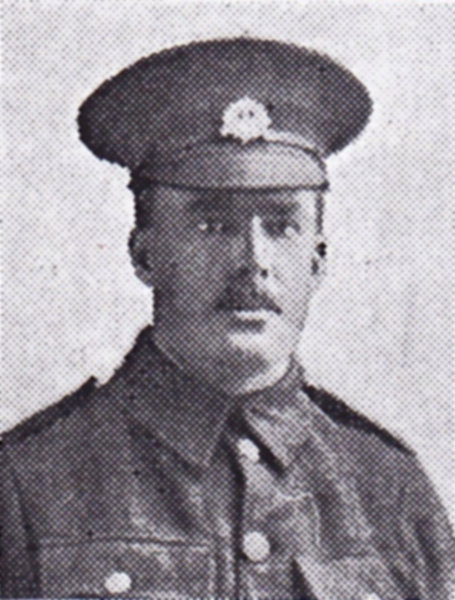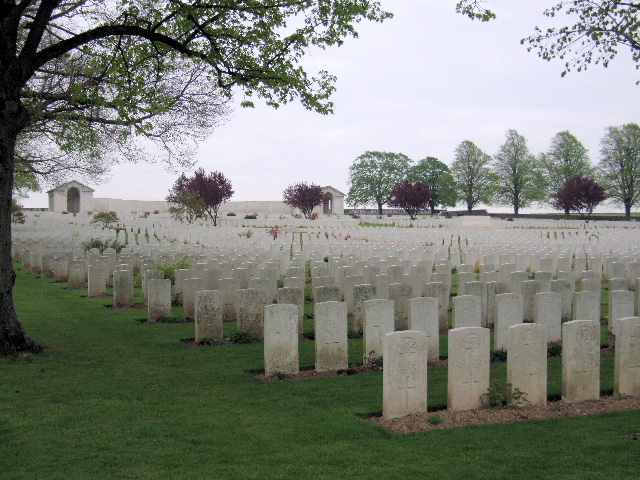Name
William John Andrews
Conflict
First World War
Date of Death / Age
15/09/1916
25
Rank, Service Number & Service Details
Private
20467
Bedfordshire Regiment
8th Bn.
Awards: Service Medals/Honour Awards
1914 /15 Star, British War and Victory medals
Cemetery/Memorial: Name/Reference/Country
SERRE ROAD CEMETERY No.2
XVII. K. 4.
France
Headstone Inscription
Not Researched
UK & Other Memorials
St Mary the Virgin Church, Therfield, Non-conformist Chapel, Therfield
Pre War
Born in Therfield on 28 Dec 1889 the youngest son of William John and Sarah Ann (Preston) Andrews, of 5a, Holywell Hill, St. Albans, baptised on 18 Feb 1890 in Therfield.
1891 census details
Father William 37 was a shepherd and mother Sarah was 42 The children were Sarah 12, Frederick W.10, Walter 9, Mary 7, Josiah 6, Bessie 4, Jack 2 and William 1.
Home was The Thrift.
1901 census details
Only Josiah, Jack and William were living at home. Possibly the girls gone into service? Their home was The Jockey House (next to the Thrift).
1911 census details
Mother Sarah 63 was now a widow and had Jack 22, a shepherd and William 21, an agricultural labourer plus two grandchildren living at her home. These were William John Edwards, 4 and Sarah Ann Edwards, 8 months.
Wartime Service
William was working for Farmer H. J. Fordham when he enlisted in Royston in 1914 as Private 20467 in the 8th Bn. Bedfordshire Regiment. After training he went across to the battlefront on August 30th 1915.
According to the ‘Crow’ newspaper he was injured on October 9th.
His battalion war diary extract appears below: This was near to Vlamertinghe in Belgium.
9 Oct 1915 Hd. Qrs. A & B. & C. Coys. proceeded to trenches & relieved A. & D. Coys. who returned to billets. Casualties - Wounded O.R.1 (This was our William).
WILLIAM was wounded in the back and left foot and was returned to a Newcastle hospital for 4 months recuperation. He was sent back to the front in April 1916. His battalion was moved down to the Somme in early August 1916 as reinforcements, after the July onset of the Battle of the Somme when there had been so many casualties.
In September the battalion went into intensive training and preparation for the 4th Army offensive planned for 15th.
As can be seen from the war diary extract below, most of the casualties were as a result of our artillery barrage being short of their target and ‘this mistake caused many casualties’ known as ‘friendly fire’! Also the tanks did not arrive!
15 Sep 1916 [Comment: The Battle of the Somme 1916 - The Battle of Flers-Courcelette] Battalion ordered to take QUADRILATERAL assisted by the Heavy Section of the M.G. Corps with "TANKS" advance about 500 yds NE and dig in. Battn was in a position for attack about 4.30 a.m. ZERO hour 6.20 a.m. Three wavs were supplied by D, D [sic] and A Coys under Capt Hatch [Robert Bernard Lawson HATCH, MC], 2/Lt Hodges [Archibald Gordon HODGES] and Lt Draisey [Edwin Roland Watts DRAISEY] respectively to attack the QUADRILATERAL, which was on our left flank, whilst B Coy co-operated by bombing down trench leading to it. At 6.0 a.m. heavy artillery opened slow barrage on Line MORVAL - LES BOEUFS. At ZERO hour (6.20 a.m.) intense artillery barrage opened and unluckily was cut short where our 3 companies were drawn up for the attack in shell holes. This mistake caused many casualties. Our attacking companies pushed forward and though supported by 1/The Buffs and later re-enforced by the 2/York & Lancaster Regt failed to take the position. "TANKS" did not arrive to assist and the position was not heavily shelled previous to the attack. Brigade ordered original trenches to be held and await orders. As battalion had suffered very severely in casualties, 6 Officers killed and 7 wounded we were relieved by 2/Y & L at 6.0.p.m. and put in brigade reserve in trenches S.E. of GUILLEMONT.
William was killed on this day and is buried in the massive Serre Rd. Cemetery no. 2 in plot XV11, row K, grave 4. His mother, who was now recorded as living at 5a, Holywell Hill, St. Albans would have received his 3 medals, the 1915 Star, the War and Victory Medals as well as his memorial plaque, often known as the ‘Dead Man’s Penny’.
Acknowledgments
Malcolm Lennox, Jean Handley



